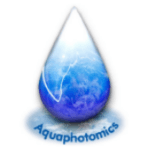
Lettuces are approximately 95% water. As dietary staples, high-demand produce items like lettuce present unique challenges to the food supply chain. Consumers want fresh, juicy, crisp lettuce, but the shelf life of such a high-water content food is extremely limited by the mechanics of water molecular structure. In a world where food scarcity, resource conservation, and reduction of food waste are increasingly of concern, there is great need to better understand this process.
Researchers from the Department of Measurements and Process Control at the Hungarian University of Agriculture and Life Sciences in Budapest, Hungary and the Aquaphotomics Research Department at Kobe University in Kobe, Japan partnered to develop a rapid, non-destructive way to assess the changes of lettuce during cold storage and explain them by using aquaphotomics while monitoring the structure of water molecules in the leaves.
The scientists purchased 10 undamaged heads of lettuce, unpackaged them, and stored them in a dark fridge without washing or treatment. The refrigerator was maintained at 0-2 degrees Celsius with a relative humidity of 91-95%. Five of the lettuces were used for spectral analysis, and five were used to take reference measurements for weight, water activity, and pigment. The lettuces were monitored for 6 days in correspondence with the typical grocery store shelf life.
Spectra were measured in the first overtone of water, 1300-1600 nm. From the 900 spectra collected, difference spectra were made by subtracting the spectra collected on the first day of storage from the spectra collected on each consecutive day. Then, in order to analyze and visualize the measured absorbance values, the difference spectra were used to identify water matrix coordinates (WAMACs), develop aquagrams, and finally display water spectral patterns (WASPs).
By observing changes in the WASPs of the leaves, the scientists determined cold storage contributed to moisture loss, damage to cell walls, expulsion of intracellular water, loss of free and weakly hydrogen-bonded water, and stimulation of defense mechanisms. These changes were observed as changes in pigments, weight, water activity, and spectral absorbance at bands related to specific molecular structures and respective functionalities. In each measure, there was clear differentiation between the inner and outer leaves of the lettuce heads.
The changes in pigments were evaluated at three absorbance peaks (454, 479, and 678 nm) which correspond respectively to β‐carotene, chlorophyll b, and combined absorption of carotenoids and chlorophylls. For the 454 nm band, the mean absorbance significantly decreased between the first and last days of storage. For the 479 and 678 nm bands, the mean absorbance significantly increased between the first and last days of storage.
Changes in weight were measured directly and attributed to respiration, transpiration, natural deterioration of lettuces, and microbial activity. The average weight was highest on the first day, with small changes on days 2, 4, and 5, and a significant drop on day 3.
Water activity is one of the most important measures of food stability, because it provides information about the amount of water available to participate in chemical reactions. The water activity of lettuce appears to follow the same trend as the weight changes. The average water activity values reached a minimum on the fourth storage day, followed by a gradual increase.
The changes in each of these traits were observed directly in the difference spectra absorbance values. For both the inner and outer leaves, the difference spectra increased to maximum absorbance levels in the ranges 1350-1400 nm and 1500-1600 nm and decreased in the range 1400-1500 nm. These changes correspond to weakly hydrogen-bonded water, strongly bound water molecules, interactions of water and sugar and water and cellulose, and crystalline water molecules. However, the changes in absorbance values indicate that the outer leaves showed impacts of cold storage almost immediately, but the impact of the inner leaves was delayed by protection from the outer leaves. In addition, a linear relationship was observed between absorbance values and storage time which would allow storage time to be predicted using measured spectra.

The results of this study show that aquaphotomics can be used to monitor changes in lettuce during storage without destroying the product. The study identified specific water absorbance bands which can be used as WAMACs for use in standard application of this method, defined a novel biomarker based on a WASP to describe the water molecular structure in lettuce leaves, and characterize changes in inner and outer lettuce leaves while in cold storage. Such aquaphotomics analysis can be used to develop a deeper understanding of the mechanisms of freshness and subsequently, to improve and innovate food preservation.
Reference
[1] Vitalis, F., Muncan, J., Anantawittayanon, S., Kovacs, Z., & Tsenkova, R. (2023). Aquaphotomics Monitoring of Lettuce Freshness during Cold Storage. Foods, 12(2), 258.
